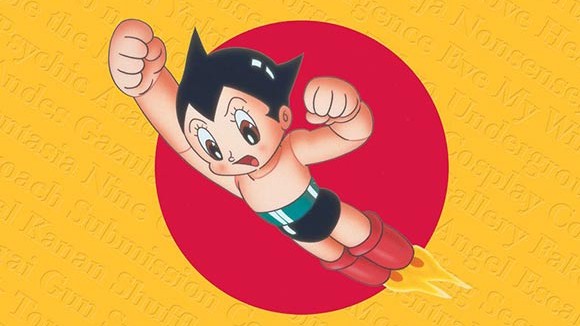

Book Review: ‘The Anime Encyclopedia’

The Anime Encyclopedia, 3rd Revised Edition: A Century of Japanese Animation
by Jonathan Clements and Helen McCarthy
(Stone Bridge Press, 1,160 pages, pub. date: March 2015)
Buy: $80.21 on Amazon
The Anime Encyclopedia: A Century of Japanese Animation by Jonathan Clements and Helen McCarthy has been a capstone in English-language anime scholarship since its initial publication in 2001, and now the book has been revised for a new readership.
A lot can change in fourteen years. In their introduction to this third edition, the authors ruminate on such subjects as the ever-growing world of Internet animation, the “4D” performances of virtual star Hatsune Miku, and the retirement of Hayao Miyazaki. The sheer scale of the shifts in the anime landscape is reflected in the increasing size of The Anime Encyclopedia: the latest revision is around 40% larger than the second edition, and twice the size of the original.
For those unfamiliar with either of the previous incarnations, The Anime Encyclopedia is an exhaustive tome which aims to cover as wide a range of anime as is feasible, from the classics of Studio Ghibli and pop-culture sensations such as Pokémon to all manner of weird and wonderful (well, not always wonderful) productions designed for niche home-video audiences.
The third edition boasts over a thousand new entries. Most of these are for anime released since 2006, although the book also spotlights some older works that were skipped over by earlier editions: the pioneering wartime short Momotaro’s Sea Eagles now has an entry, as does The New Adventures of Pinocchio, a series which co-writer Clements recently championed as a significant piece of early TV anime in his book Anime: A History.
As well as specific anime, studios, and creators, the book contains a number of longer entries on broad themes and concepts relevant to Japanese animation. These pieces are listed by themselves in the contents page and, when taken together, form a comprehensive introduction to anime in their own right.
Topics covered include censorship, technological developments, distribution and piracy, portrayals of religion, foreign influences, fandom, technological evolution, and more. Various genres–such as sports, science fiction, horror, romance and slice-of-life–have their own potted histories which demonstrate how audience tastes have changed over time.
Clements and McCarthy are not afraid to go off the beaten path in their research: “Stereotypes and Archetypes,” for example, begins with a summary of the stock character types found in kabuki theater. Puppetry and stop motion, early anime, and wartime anime all receive entries, helping to fill in areas of Japanese animation history that are often ignored by other books.
By covering anime history on a topic-by-topic basis, these sections of the book emphasize how each new development can leave an unexpected impact. In their entry on technology, the authors describe how the adoption of digital animation in the 1990s made it easier for animators to depict night-time scenes—and, as a result, vampires and werewolves suddenly received a boost in popularity!
Another virtue of the book, and one which should not be understated, is the wry sense of humor which the authors show throughout.
The creator of the oddball Akahori Gedo Hour, we are told, “presumably based it on some feverish dreams that ensued after he watched Excel Saga while eating cheese too close to bedtime.” Better still is the underhanded compliment paid to Duel Masters, one of the card game-related anime that followed in the wake of Pokémon: “Remarkable for the enthusiastic way it attempts to make the sight of children playing cards interesting, although the authors dread the day when someone tries to animate paint drying.” As for the 1986 biopic Young Princess Diana, the book takes a generally positive tone but suggests that the anime might have been improved by a giant robot or two.
By its nature, The Anime Encyclopedia inevitably ends up chronicling a number of anime that were probably best forgotten—but Clements and McCarthy show an infectious engagement with even their dullest topics. It is this enthusiasm that raises the book above the level of a mere reference tool (albeit a useful one) and makes dipping into it a genuine pleasure.
One notable back-step from previous editions is the absence of illustrations. The publishers make the reasonable statement that they are no longer willing to deal with various Japanese rights-holders (reportedly a tad over-cautious when it comes to piracy) simply so they can include tiny, black-and-white pictures in the book. We live in an age when the same images are readily accessible in full color on Google, so this is a fair concession.
The digital editions of the book contain hyperlinks for easy navigation; if you are reading on a computer, you will be presented with relevant web links as well. But while entries on anime are linked to wherever the title is mentioned, studios and individuals are left unlinked. This oversight makes it fiddly to navigate the book on a Kindle: e-book users are unlikely to even realize that the encyclopedia has an entry on the so-called “Shadow Staff,” a group of animators tasked with creating instructional films during World War II, unless they happen to be looking up an anime with the word “shadow” in the title.
Technical quibbles aside, The Anime Encyclopedia remains an impressive and invaluable achievement. Anybody with an interest in the subject should have a copy on their shelf (physical or digital) and can count on many an hour spent poring over the wide-ranging history of Japanese animation.
Order The Anime Encyclopedia on Amazon.

